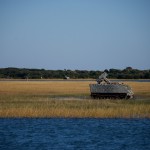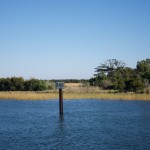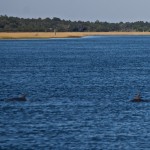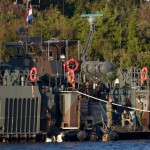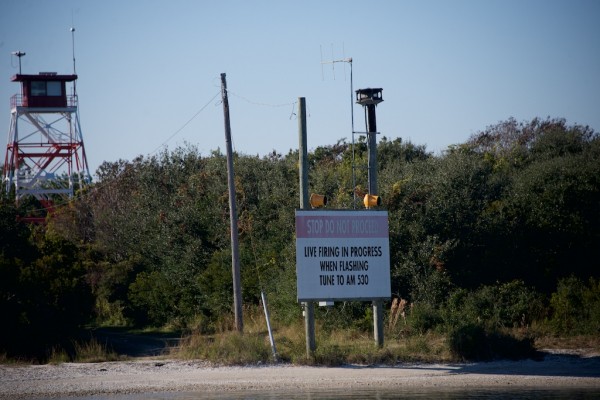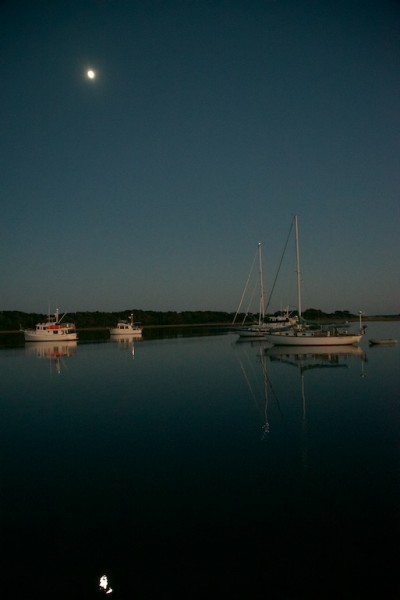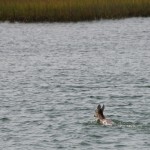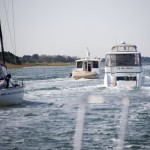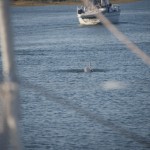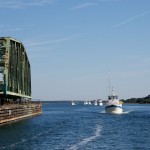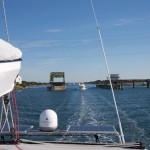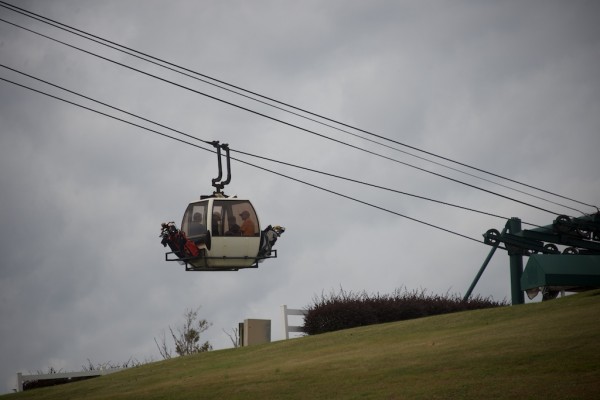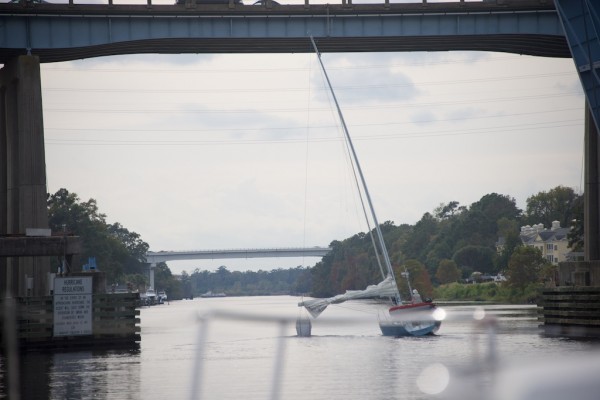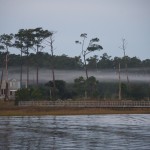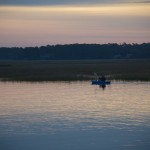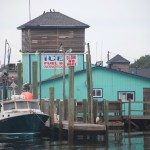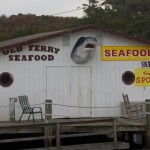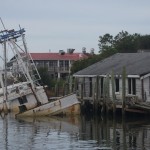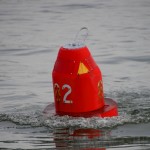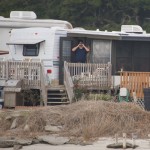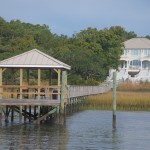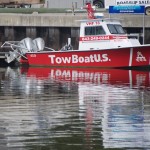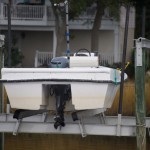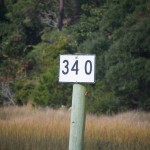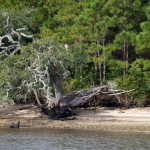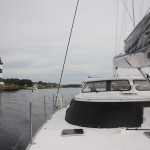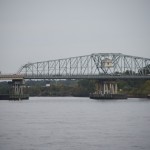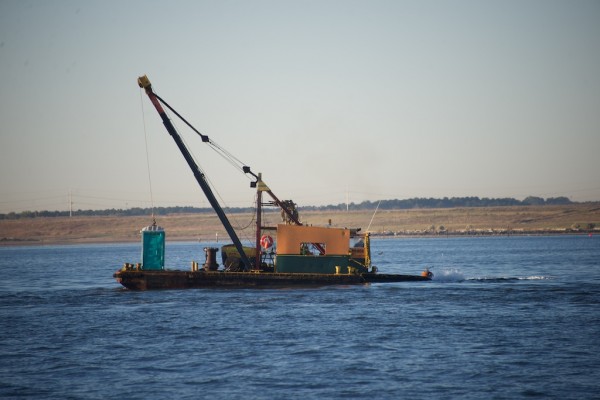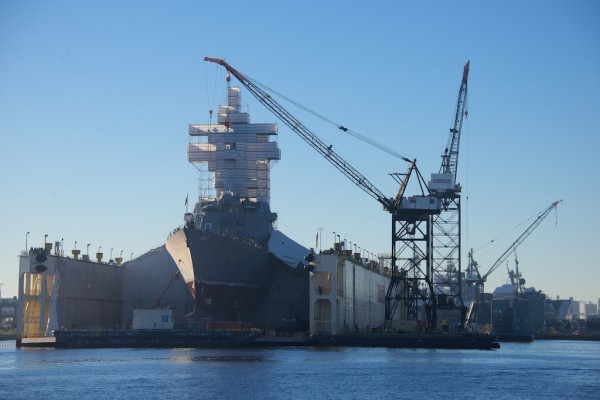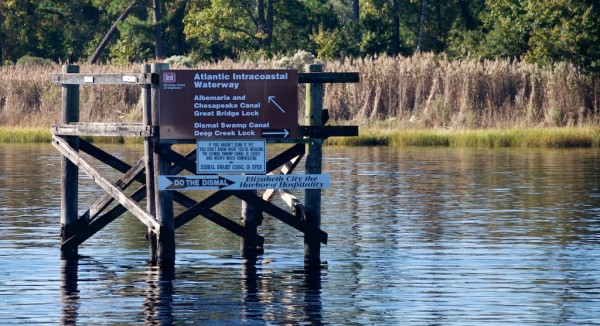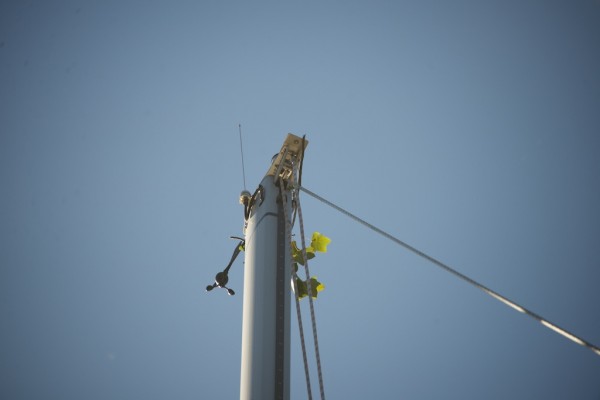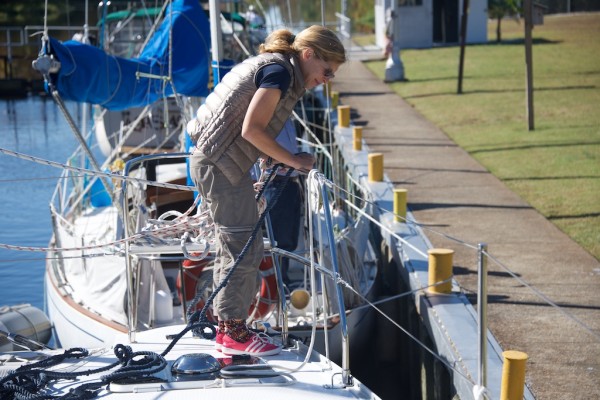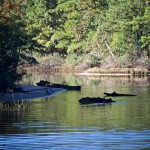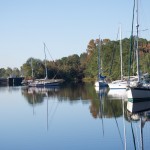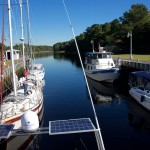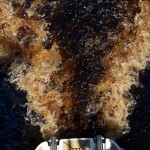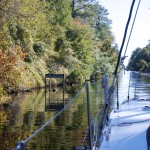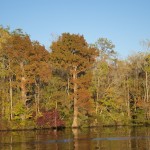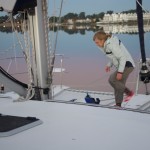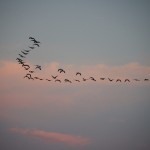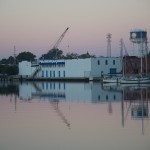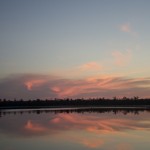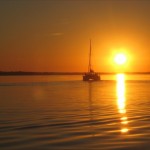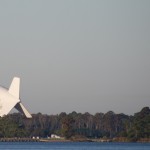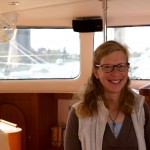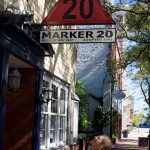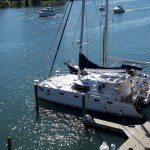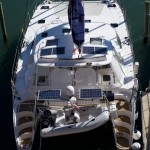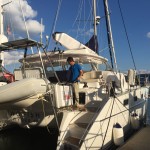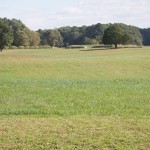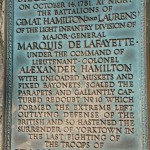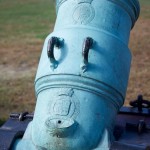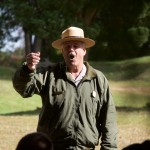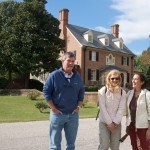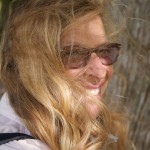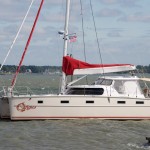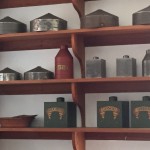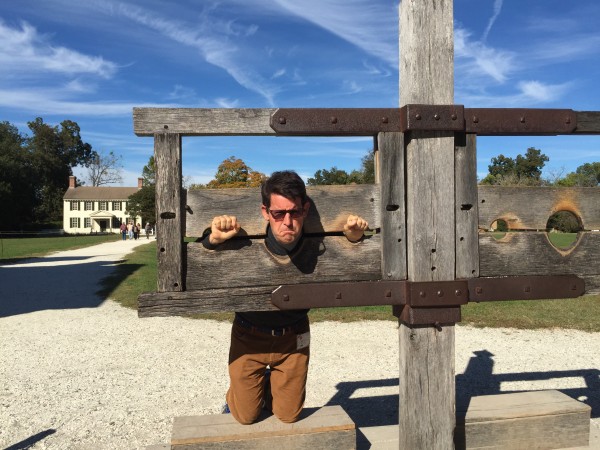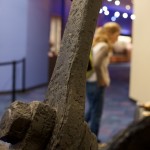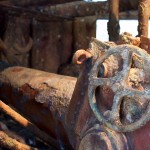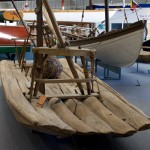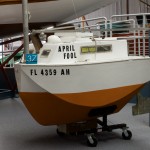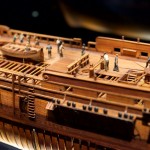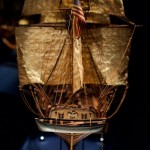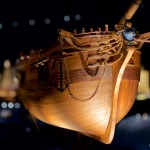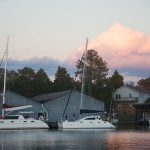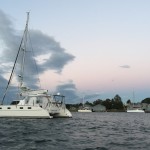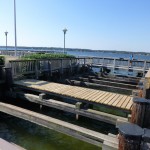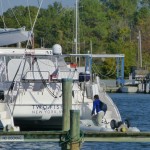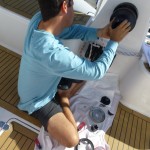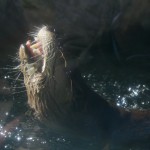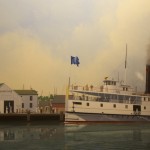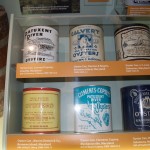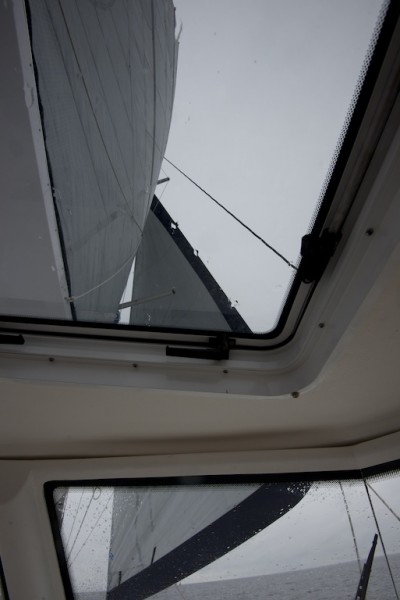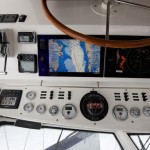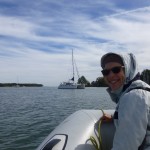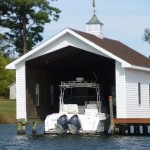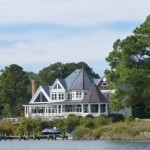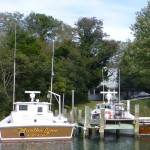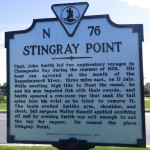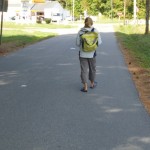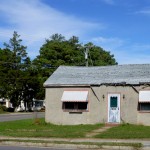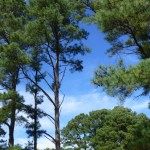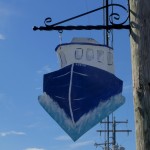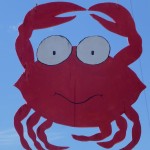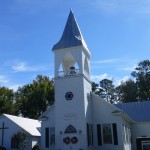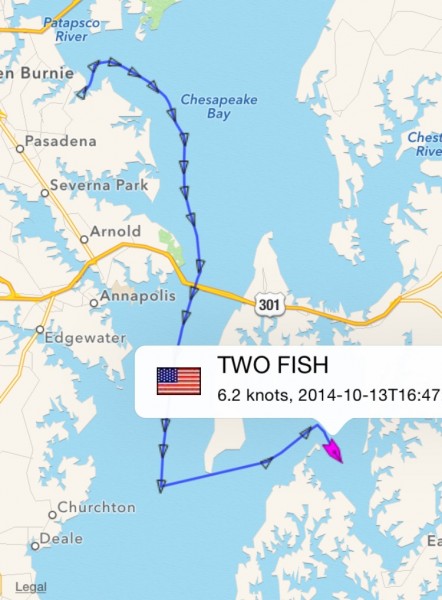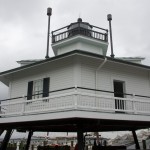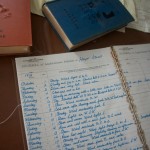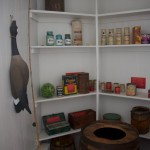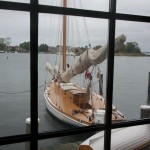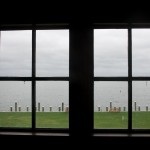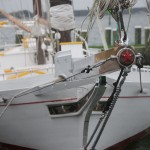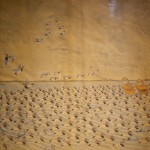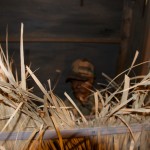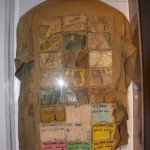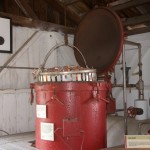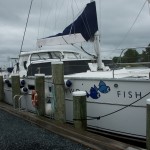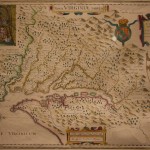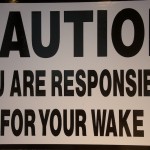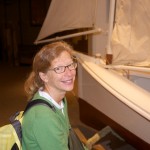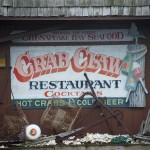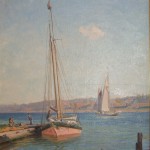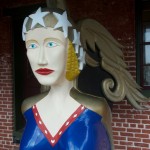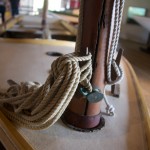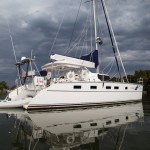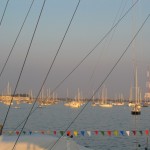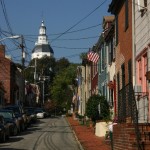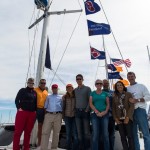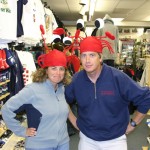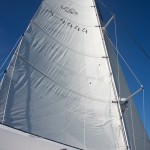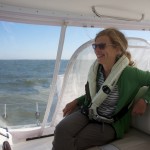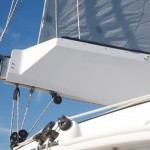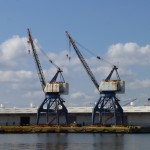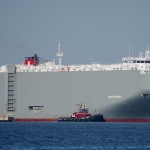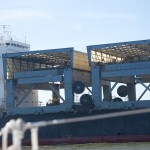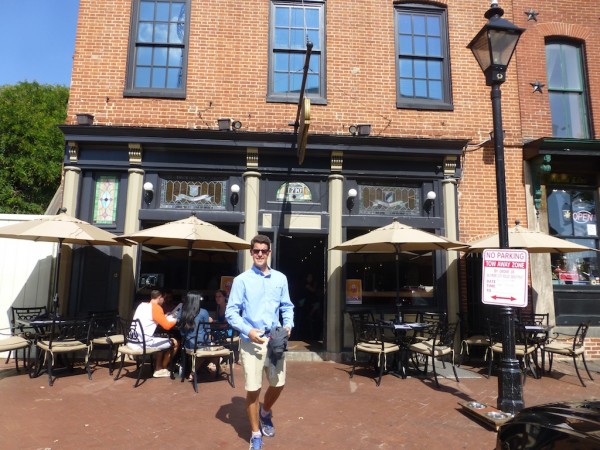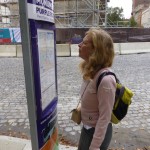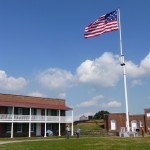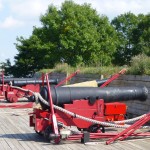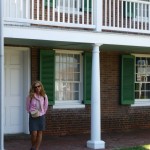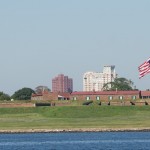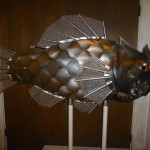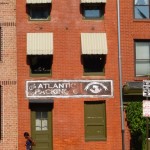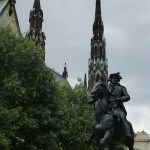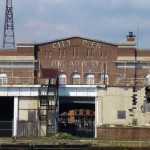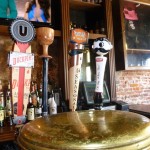For those of you who think we are wiling away the hours in a tropical paradise, let me describe my day. The alarm went off at 5am. Fortunately, this was a fake 5am since we just finished Daylight Savings Time, but my brain still doesn’t like to see the numeral 5 as the starting point. The temperature was in the 30s and it was still dark outside. I quickly put on my 5 layers of clothing, made breakfast and went outside. We unplugged from shore power, removed most of the lines holding us to the dock, turned on the chartplotters and started the engines.
My job was to stand at the bow with our powerful flashlight, and to tell Jason how we looked on port as he pulled as away from the dock. Since the helm is on starboard, it is sometimes hard for him to gauge distance from objects. Lines released and we pivoted away. My next job was to stay at the bow and be his eyes as we steered out of the marina and towards the river. We now communicate using Bluetooth headsets. Sorry sailing purists (you know who you are) but the headsets are more efficient than handsignals. This is especially true when weighing the anchor; I generally have the chain counter in my right hand, the seawater hose to clean the chain in my left hand and am running back to the chain locker to clear the beehiving chain. Despite drinking New Jersey water, I just haven’t managed to grow that third arm which could be used to indicate the angle of the chain.
Back to our exit. All I could think of was how frozen my toes were. I tried moving my toes and fingers a bit to encourage blood flow. I wondered if I had just cursed aloud and whether Jason had heard me through the headset. We got through the channel markers and I stowed all of our fenders, despite the difficulty of removing lines when your fingers can’t move. Relieved from duty, I ran inside to warm up while Jason remained at the helm in his winter best. When will we reach warm weather? [Jason comment: I feel bad reading this as inside the enclosure it was not too cold for me. I was wearing more fleece than you find at a Patagonia store plus the “bubble” is effective in keeping you warm.]
- Military Sculpture
- Statute Mile 240!
- Porpoises
- Mile Hammock Bay
- Where’s the Fish
Later that day, the sunshine warmed us up and we enjoyed a leisurely ride through the ICW. We were serenaded by US Navy boats (who politely waited for us to go under the bridge), porpoises, and more Navy boats. The porpoises tend to like shallow water and at one point, unaided by markers, I think they tried to help me stay in the channel – keep me to starboard was the message I took away.
As we passed through the Camp Lejeune firing range, I heard a bit of a rat-a-tat-tat, even
though the green lights indicated they were not firing at that point. I guess it was a neighboring range because we passed unscathed. Towards the end of the day 5 or 6 boats sped by.
They had Netherland flags so were either on a joint exercise or were US troops in some war game simulation. They did not stop to chat, so I will never know.
That night’s crowded anchorage was calm, with the occasional noise from one of our Navy friends entering or exiting the harbor. We were a bit concerned about drifting into another boat so Jason tied a fender ball to our stern. If we touched a neighboring boat, at least it would be a soft impact. The wind shifted 180 degrees during the night causing Two Fish and the other boats to spin but without incident. The Captain often prepares for things that fortunately do not occur.
It was back to the peaceful Intercoastal and a transit of Cape Fear River. I need to re-watch that movie. Some of the bridges are opened on request while others are opened once an hour. The hourly bridges tend to accumulate a backlog as the boats wait for the next opening. Boats may look calm waiting for the bridge openings but they are doing a ballet to hold their position. Frequently currents near bridges can be strong and there can be shoaling (sand creating shallow spots). The captains must hover the boat without running aground, hitting another boat or getting swept into the closed bridge. With twin engines Two Fish is good at holding station with either her bows or sterns into the current. It is a more difficult maneuver on monohulls. We often witness them charging up river into the existing group of boats since monos prefer to have their bow into the current. As the bridge opens, the confusing mess of boats gains some order as the monos spin around and head towards the bridge. Some bridge operators are very focused on minimizing the time the bridge is open. They encourage the boats to pull up close to the bridge. I doubt they have ever steered a boat in a current in front of an unforgiving iron bridge. As the parade passes through the now open span, boats try to follow as close as possible. Not unlike a highway, some boats are tailgating and others are slow pokes and then a few insane boats will stop for no reason at all. A quick thank you on the VHF radio to the bridge operator and you have passed another hurdle south.
The queue of boats passes the bridge according to arrival time rather than their cruising speed. Over the following 20 minutes the boats sort themselves out by passing. The airwaves are filled by radio calls from the motor boat. “Two Fish. Two Fish. This is the xyz boat. We will give you a slow pass on port.” I often wonder what the Long Island Expressway would be like if that were the custom on highways as well.
We decided to tie up at Southport Marina for the night and were pleasantly surprised by the surroundings and their nightly weather chat. Hank (http://www.carolinayachtcare.com) gave us weather and ICW transit tips which guided us later on in our travels. The biggest problem with the ICW is shoaling and the general opinion is that South Carolina and Georgia don’t have budgets to dredge their portions. I suppose at some point they will lose tourism dollars and do something about it. For now it is just a nail-biting timing exercise. We try to check comments on Active Captain and ask other boaters for additional information. The ICW is also not so well charted – the chart has often thought we were on land. This
adds to the experience? As we got closer to Myrtle Beach, we saw more houses and restaurants. We also passed by a golf course whose parking lot was on one side of the ICW and the course on the other. Golfers had to take a gondola from the parking lot across the ICW with their clubs. Another interesting moment was when we had to wait for a monohull stopped right near a bridge. They were a bit too tall for the bridge and had attached a bucket of water to the mast so as to heel the boat while transiting. In case you are wondering – they made it. Two Fish also made it a bit farther south.
- Morning Fog
- Morning Kayaker
- Wonder if it was good
- Many places to stop
- Shark?
- Needs work
- Passing by
- Current meter
- Motor home
- Nice set up
- Bird convention
- You know it is shallow
- Interesting outboard
- Mile 340
- Another interesting view
- Two Fish Motoring
- Bridge approach
- Motor Club
